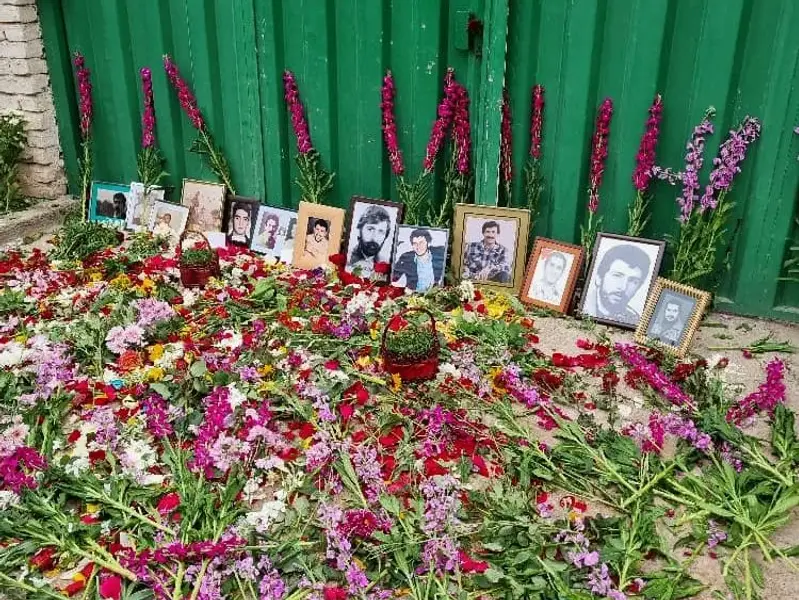Iranian security forces have prevented families of prisoners executed in the 1980s from visiting the Khavaran cemetery, the resting place of their loved ones.
The families, who are known as the "Mothers of Khavaran," had planned to visit the graves of the victims of Iran's 1988 mass executions on the last Friday of the year before Norouz, but they were met with locked gates. Visiting the graves of loved ones on the last Friday of the year is a popular tradition in Iran.
Images shared on social media showed the families placing flowers on the iron gate of Khavaran cemetery and holding photos of their executed loved ones.
Mansoureh Behkish, a human rights activist and member of the Mothers of Khavaran, wrote on social media that the families were once again faced with closed doors on the eve of the Iranian New Year.
Behkish, who lost four brothers and a sister in the 1980s, added, "The agents assigned to the entrance of Khavaran asked for national ID cards, which was met with resistance from the families."
The Mothers of Khavaran have been holding a weekly gathering at the cemetery since 1988 to mourn their loved ones and demand justice. The cemetery is believed to be the mass grave of thousands of political prisoners who were executed while serving their sentences.
The exact number of prisoners executed during the purge is not known but according to Amnesty International, Iranian authorities "forcibly disappeared" and "extrajudicially executed" around 5,000 between July and September 1988. Most of victims were linked to the MEK but there were also others with links to leftist and secular groups such as Fadaiyan Khalq Organization (FKO) and Tudeh Party as well as some Kurdish groups, such as Komala and the Kurdish Democratic Party of Iran.

